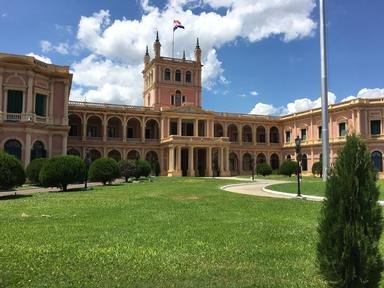Quiz Answer Key and Fun Facts
1. GEOGRAPHY: which of these countries does NOT border Paraguay?
2. WORLD: one of the official languages of Paraguay is Spanish, but what is the other one?
3. ANIMALS: the Pampas fox is the national animal of Paraguay. However, is it a 'true' fox?
4. MUSIC: which style of dance music, originally from Central Europe, became popular in Paraguay in the 19th century, to the point where a Paraguayan variant developed? (Weird Al might know.)
5. RELIGION: which Catholic order founded 30 settlements, or reductions, in Paraguay?
6. SCI/TECH: what is Paraguay's main energy source?
7. LITERATURE: of these South American writers, which is the Paraguayan one, considered to be the father of contemporary Paraguayan literature?
8. HISTORY: which dictator became President of Paraguay in 1954, and ruled the country with an iron fist until he was overthrown in 1989?
9. HOBBIES: chipa is a Paraguayan street food, often consumed as breakfast or a snack. But what is it?
10. SPORTS: Jose Luis Chilavert is a retired Paraguayan footballer. He was a goalkeeper when he played, but what made him stand out from other goalkeepers?
Source: Author
Kankurette
This quiz was reviewed by FunTrivia editor
agony before going online.
Any errors found in FunTrivia content are routinely corrected through our feedback system.
